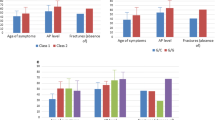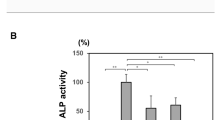Abstract.
Hypophosphatasia is an inherited disorder characterized by defective bone mineralization and a deficiency of tissue-nonspecific alkaline phosphatase (TNSALP) activity. The disease is highly variable in its clinical expression, because of various mutations in the TNSALP gene. In approximately 14% of the patients tested in our laboratory, only one TNSALP gene mutation was found, despite exhaustive sequencing of the gene, suggesting that missing mutations are harbored in intron or regulatory sequences or that the disease is dominantly transmitted. The distinction between these two situations is of importance, especially in terms of genetic counseling, but dominance is sometimes difficult to conclusively determine by using familial analysis since expression of the disease may be highly variable, with parents of even severely affected children showing no or extremely mild symptoms of the disease. We report here the study of eight point mutations (G46 V, A99T, S164L, R167 W, R206 W, G232 V, N461I, I473F) found in patients with no other detectable mutation. Three of these mutations, G46 V, S164L, and I473F, have not previously been described. Pedigree and/or serum alkaline phosphatase data suggested possible dominant transmission in families with A99T, R167 W, and G232 V. By means of site-directed mutagenesis, transfections in COS-1 cells, and three-dimensional (3D) modeling, we evaluated the possible dominant effect of these eight mutations. The results showed that four of these mutations (G46 V, A99T, R167 W, and N461I) exhibited a negative dominant effect by inhibiting the enzymatic activity of the heterodimer, whereas the four others did not show such inhibition. Strong inhibition resulted in severe hypophosphatasia, whereas partial inhibition resulted in milder forms of the disease. Analysis of the 3D model of the enzyme showed that mutations exhibiting a dominant effect were clustered in two regions, viz., the active site and an area probably interacting with a region having a particular biological function such as dimerization, tetramerization, or membrane anchoring.
Similar content being viewed by others
Author information
Authors and Affiliations
Additional information
Electronic Publication
Rights and permissions
About this article
Cite this article
Lia-Baldini, A., Muller, F., Taillandier, A. et al. A molecular approach to dominance in hypophosphatasia. Hum Genet 109, 99–108 (2001). https://doi.org/10.1007/s004390100546
Received:
Accepted:
Published:
Issue Date:
DOI: https://doi.org/10.1007/s004390100546




